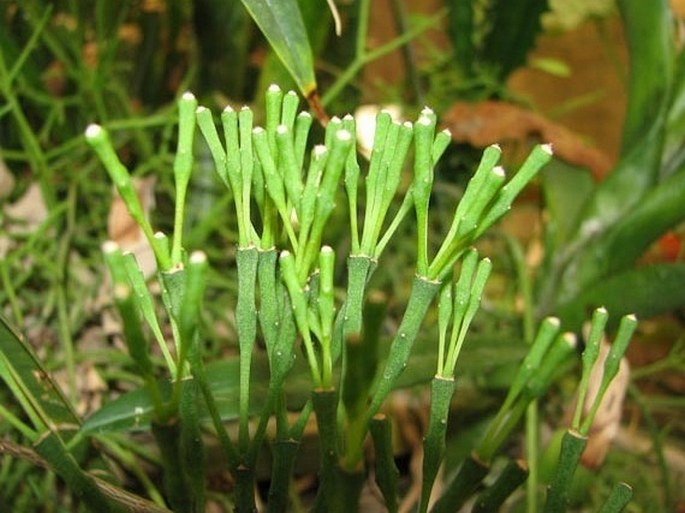Syn.: Cactus lyratus Vellozo, Cactus salicornioides (Haw.) Link et Otto, Hariota salicornioides DC., Rhipsalis salicornioides Haw.
Family: Cactaceae Juss.

Distribution: Eastern Brazil, Mata Atlântica – Bahia, Espírito Santo, Minas Gerais, Paraná, Rio de Janeiro, São Paulo.
Ecology: Epiphytic cactus, sometimes lithophytic, from sea level to 1800 m of elevation. Blooms at the beginning of rainy season.
Description: Spineless cactus with a shrubby habit, stem about 50 cm long, originally erect, later spreading and then pendent, 5–10 mm in diameter, branching, branches made up of short terete joints, 2–5 cm long, branches in whorls of 2 to 6; branchlets club-shaped, lower part very slender, 1.5–3 cm long, green to purplish; areoles with setae only on the youngest branchlets; flowers 8–10 mm long, yellow; outer perianth-segments short and obtuse; inner obtuse and somewhat crenate; filaments yellowish, shorter than tepals; style yellowish, stigma lobes 4–5, white.
Threat and protection: This species is protected by CITES.
Note: Specific name salicornioides refers to resemblance to Salicornia – Glasswort or Pickleweed.
De Candolle created genus Hariota in 1834, named after Thomas Hariot (1560–1624), an English astronomer, mathematician, ethnographer, and translator. Britton and Rose renamed it in 1915 to Hatiora which is an anagram of the original name.
Hatioras are close relatives of Rhipsalis.




These images were taken in culture.


